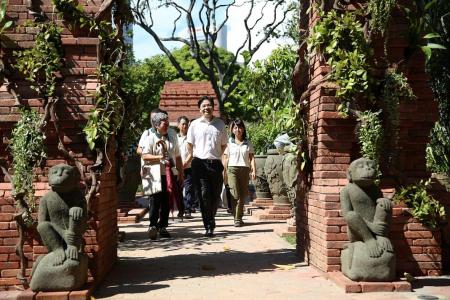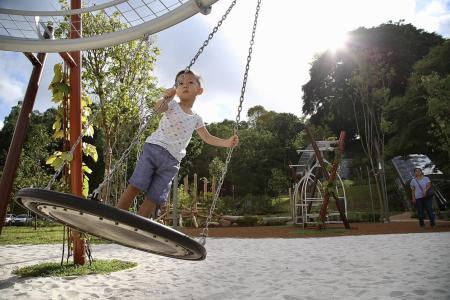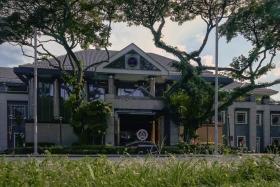Go back in time with nine new gardens at Fort Canning Park
Nine historical gardens open to recreate scenes of Singapore's past
A stroll in Fort Canning Park will now take visitors on a journey back in time.
Nine historical gardens, launched yesterday, recreate the days when 14th-century kings such as Sang Nila Utama had their palaces high on the hill, while royal women bathed in a freshwater spring.
They also recreate the 1800s, when cash crops such as nutmeg, clove and rambutan were grown on a 20ha plantation next to the park.
In February last year, Minister for National Development Lawrence Wong announced enhancements to be made to Fort Canning Park to highlight its history and make the hill more accessible to visitors.
The gardens, spanning 8ha of the 18ha park, consist of Pancur Larangan (Forbidden Spring), Artisan's Garden, Sang Nila Utama Garden, Raffles Garden, Farquhar Garden, Jubilee Park, First Botanic Garden, Spice Garden and Armenian Street Park.
Making them more exciting is an augmented reality (AR) trail, developed by the National Parks Board (NParks) and National Heritage Board.
It winds through the gardens, allowing visitors to view scenes from as early as 1300 on their smartphones by scanning the AR codes at eight points along the route.
The Sang Nila Utama Garden is a re-creation of South-east Asian gardens of the 14th century. Visitors are welcomed by Javanese split gates and statues of frogs, fish and ducks - fauna that was believed to be seen in the palace gardens.
The garden has traditional features such as a symmetrical layout and reflective pools filled with lily pads that used to be a meditative refuge for royalty.
"The intent was to restore landscapes that were known to have existed or could have existed in Fort Canning Park," Mr Wong said at the opening of the gardens yesterday.
"To do so, we consulted archaeologists and historians, and scoured historical records, old photos, maps and letters."
Mr Wong also announced that the second phase of the enhancement plan will be completed in 2021.
A nature play garden and a space to showcase the performing arts will be added to Jubilee Park.
Fort Canning Centre will be repurposed as a heritage gallery, while the foothills will have art galleries and more dining options.
To make Fort Canning Park more accessible to the elderly, families with young children and people with disabilities, covered escalators, pedestrian-friendly walkways and a platform lift have been installed at certain points.
The covered escalators connecting Fort Canning MRT station and Bras Basah MRT station to the park have been strategically positioned to increase accessibility to the park, said an NParks spokesman.
Previously, visitors could access the park only by climbing the stairs.
The centrepiece event of the bicentennial, the Bicentennial Experience, will open at Fort Canning Centre on Saturday and run until Sept 15.
The multimedia showcase will take visitors through 700 years of Singapore's history, telling the story through sets, live performances and multimedia elements.
Get The New Paper on your phone with the free TNP app. Download from the Apple App Store or Google Play Store now




